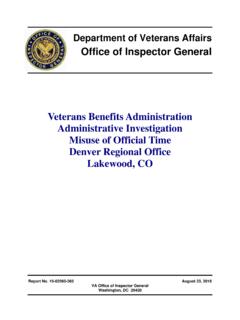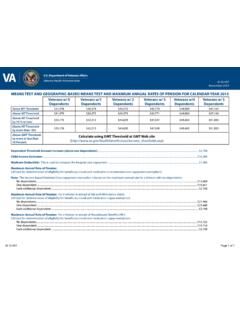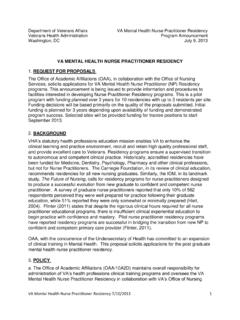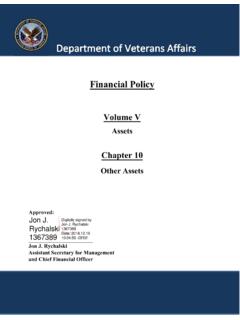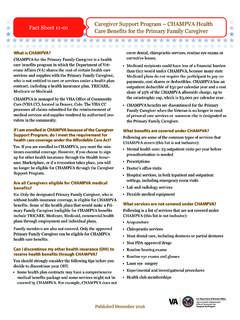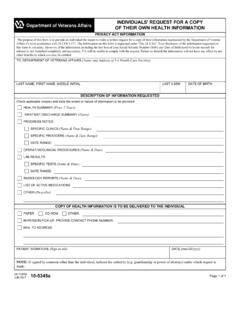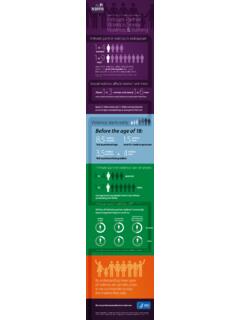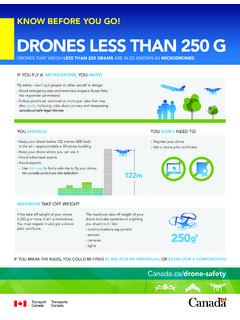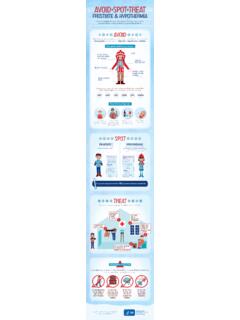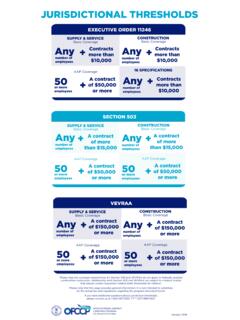Transcription of VETERAN POPULATION - Veterans Affairs
1 Annual % Change of VETERAN POPULATION Over 30 Years Total Male Female VetPop2016 (Blue)+ (Red) National Center for Veterans Analysis and Statistics May 3, 2019 Since 2000, the Predictive Analytics Service (PAS) hasbeen producing the VETERAN POPULATION Projection Model (VetPop) to estimate and project the number and charac-teristics of VETERAN POPULATION . Based on the best available data as of September 30, 2015, the VetPop projections show a VETERAN POPULATION that is both declining in number and becoming more evenly distributed in age (Figure 1). The main data sources of VetPop are: Decennial Census (2000 and 2010); American Community Survey; United States Veterans Eligibility Trends and Statistics 1 Over the next 30 years VETERAN age becomes more evenly distributed Age Figure Age Trends(a collection of VA administrative data); Department of Defense (DoD) data on military service history of Veterans and servicemembers; and projected separations from theactive component by DoD Office of the to Figure 2, the total VETERAN POPULATION is predicted to decline from million in 2015 to million in 2045.
2 The total annual change is - percent. The annual decline for male Veterans is percent and the annual increase for female Veterans is percent. The following are some applications of VetPop within VA. The Office of Enterprise Integration uses VetPop toFigure Projections by Gendersupport the Department s Strategic Plan, the Geographic Distribution of the Department of Veterans Affairs Expendi-tures, and the State and Territories Summary Reports. The Veterans Health Administration uses VetPop for projecting the enrollee POPULATION in the Enrollee Health Care Projec-tion Model. The Veterans Benefits Administration uses the projected military separations by period of service to project compensation and pension caseloads, education beneficiaries and for other planning efforts.
3 The National Cemetery Administration uses the projections of VETERAN deaths for its grave site planning. Other external users of the VETERAN POPULATION projections include the Office of Management and Budget, the House and Senate Veterans Affairs Committees, the Veterans Service Organizations, state and local governments, non-governmental organizations, academic institutions, and individual Veterans (Figure 3). Contribution to Strategic Priorities:First, VetPop results enhance our understanding of our VETERAN POPULATION by expanding our knowledge of their experiences in military service. Second, the VetPop pro-cess includes blending data from various data sources to produce VETERAN counts at the national, state and below the state levels for certain demographics. It includes projecting the number of VETERAN records out into the future for 30-years.
4 Third, the results are placed on a public facing website to increase transparency. This, in turn, expands the use of Federal Government data by state, local and private stakeholders. Fourth, the results support evidence-based policymaking. Fifth, the blended data set supports data-driven decision making, provides general guidance of what may happen in the future, and increases VA s Sources and Principal Users of VETERAN POPULATION Projection ModelDepartment of Defense (Active & Reserve Components) Department of Veterans Affairs (Administrative Data) US Census Bureau (Decennial Census and American Community Survey) Veterans Health Administration Veterans Benefits Administration National Cemetery Administration Office of Management and Budget Congressional Committees on Veterans Affairs Veterans Service Organizations Office of Enterprise Integration VETERAN POPULATION Projection Model Office of Enterprise Integration, Data Governance and Analytics Data Sources Principal Users Source.
5 VETERAN POPULATION Projection Model 2016: Congressional Briefing, June 2017, revised. Prepared by the National Center for Veterans Analysis and Statistics as of May 14, : VETERAN POPULATION Projection Model 2016: Congressional Briefing, June 2017, revised. Prepared by the National Center for Veterans Analysis and Statistics as of May 14, : VETERAN POPULATION Projection Model 2016: Congressional Briefing, June 2017, revised. Prepared by the National Center for Veterans Analysis and Statistics as of May 3, POPULATION


